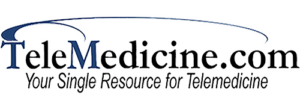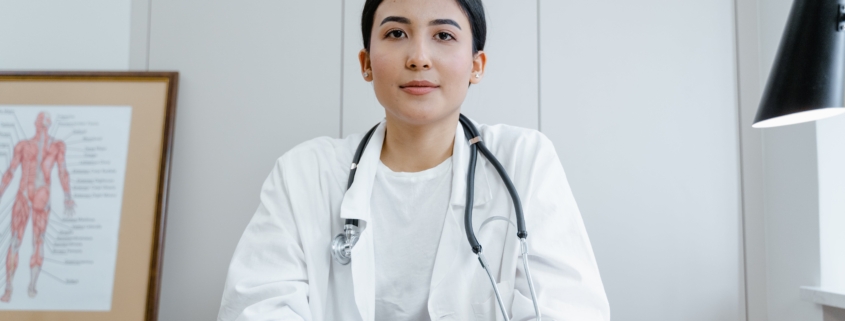Use of Telehealth
What is the best use of Telehealth? We’re all aware that the internet has transformed modern life. And now, modern medicine as well. The use of Telehealth has become recognized for its ability to help you manage health care as well as receive the services you might need.
What is Telehealth
Telehealth uses digital information and communication technologies, such as computers, mobile devices, or tables, in order to access healthcare services remotely and manage healthcare. This kind of technology may be used from home or by a doctor.
Some or all of the following could be done to help an individual maintain diabetes:
- Using an app to estimate, based on the patient’s diet and exercise level, how much insulin they may need.
- The use of an online patient portal that provides all of the patients with necessary medical information
- Order testing or medications online.
- Receive a mobile retinal photo screening at a doctor’s office rather than scheduling an appointment with a specialist.
- Receive emails, texts, or phone reminders when it is time for a flu shot, foot exam, or other preventive care.
Telehealth, also called e-health or m-health (mobile health), has the following goals:
- To ensure that healthcare can be accessible to more rural communities.
- Ensure that services are more readily available or convenient for individuals who are unable to travel to the doctor’s office
- Provide access to medical specialists.
What is the use of Telehealth?
Patient Portal
Having a patient portal may help streamline the process for medical professionals, as well as patients. Using a patient portal to securely store patient information may assist in:
- Communicate with a doctor or nurse.
- Request prescription refills.
- Review test results as well as summaries of previous visits.
- Schedule appointments via an online platform
If your doctor belongs to a large health care system, the portal could also provide a single point of communication for any specialists you may need to see.
Virtual Appointments
Clinics who have the correct resources may utilize smart devices to engage in virtual appointments with their patients. These kinds of appointments enable patients to receive ongoing care from their regular doctor when an in-person visit is not possible or required.
There are other virtual appointments that include web-based consultations with a doctor or a nurse practitioner. This is often only available for minor illnesses, which do not require emergency medical care.
When a patient logs into a web-based service, they are guided through a series of questions. The doctor or nurse practitioner can then prescribe medications, suggest home care strategies, or recommend additional medical care.
Similar to a nursing call center that is staffed with nurses who use a question-and-answer format to provide advice for care at home. A nursing call center cannot diagnose illness or prescribe medications.
Although these services are extremely convenient, they may have some drawbacks:
- Treatment given may not be as sufficient as a regular doctor’s visit
- Your full medical history may not be considered when making a diagnosis
- A lack of in-person examination may hinder the final diagnosis
- This type of service does not provide a secondary solution to implement if the first treatment is not successful.
Remote Monitoring
There are a variety of technologies that enable doctors or health care teams to monitor your health remotely. These technologies include:
- Web-based or mobile apps are used for uploading information, such as blood glucose readings, to your doctor or health care team.
- Devices that not only measure but wirelessly transmit information, such as blood pressure, blood glucose, or lung function.
- Wearable devices that automatically record as well as transmit information, such as heart rate, blood glucose, gait, posture control, tremors, physical activity, or sleep patterns.
- Home monitoring devices used by older people or people with dementia are used to detect changes in normal activities such as falls.
Communication Between Doctors
Doctors are also able to take advantage of the technology in order to provide better care for their patients. An example of this is a virtual consultation that allows primary care doctors to get input from other specialists when they are faced with questions or concerns regarding your diagnosis or treatment.
A primary care doctor could send exam notes, history, test results, X-rays or other images to a specialist to review. The specialist may either respond electronically, conduct a virtual appointment with the patient at the doctors office, or request a face to face meeting.
These virtual consultations could prevent unnecessary in-person referrals to a specialist, reduce wait times for specialist input as well as eliminate unnecessary travel.
Personal Health Records
Known as a PHR system, an electronic personal health record system is a collection of information about a patient’s health that you can control and maintain as necessary. A PHR app is accessible to patients via a web-enabled device such as a computer, laptop, or smartphone.
In an emergency, personal health records prove useful by allowing emergency personnel to quickly retrieve vital information such as current diagnosis, medications, drug allergies as well as your doctors contact information.
Personal Health Apps
There is a multitude of apps available that have been created in order to help consumers better organize their medical information in one secure place. These digital tools may help patients with the following:
- Storing personal health information.
- Recording vital signs.
- Calculating and tracking calorie intake.
- Scheduled reminders for taking medicine.
- Recording physical activity, such as a patient’s daily step count.
The Use of Telehealth Potential
This technology has the potential to improve the quality of health care as well as make it accessible to more people. Telehealth may provide various opportunities to ensure that health care becomes more efficient, better coordinated as well as closer to home.
The research done on telehealth is still relatively new, but it is, however, growing fast. An example of this is that studies have shown that both telephone-based support and telemonitoring of vital signs of individuals with heart failure reduced the risk of death as well as hospitalization for heart failure. It also supports the improved quality of life.
Telehealth and its Limitations
Although the use of telehealth has the potential to better coordinate care, it also runs the risk of fragmenting health care. This fragmented care may lead to numerous gaps in care, overuse of medical care, inappropriate use of medications, or unnecessary or overlapping care.
The various potential benefits that telehealth services have to offer may be limited by other factors as well, such as the ability to pay for them. Insurance reimbursement for telehealth still varies by state as well as the type of insurance. It is also worth mentioning that the individuals who would benefit the most from this improved access to care may be limited because of regional internet availability or the cost of the mobile services.
In a Nutshell
Although the use of telehealth is an amazing invention that could improve health care in areas that need it most, it does pose its own risks as well as challenges. The use of telehealth can, however, revolutionize how we make use of medical care as well as limit exposure to potential diseases and viruses that may be lurking in ER’s and doctor’s waiting rooms.
In partnership with Healthier Me Today, telemedicine is dedicated to your health and well-being! Visit www.healthiermetoday.com for the latest in health, nutrition, and your lifestyle!



